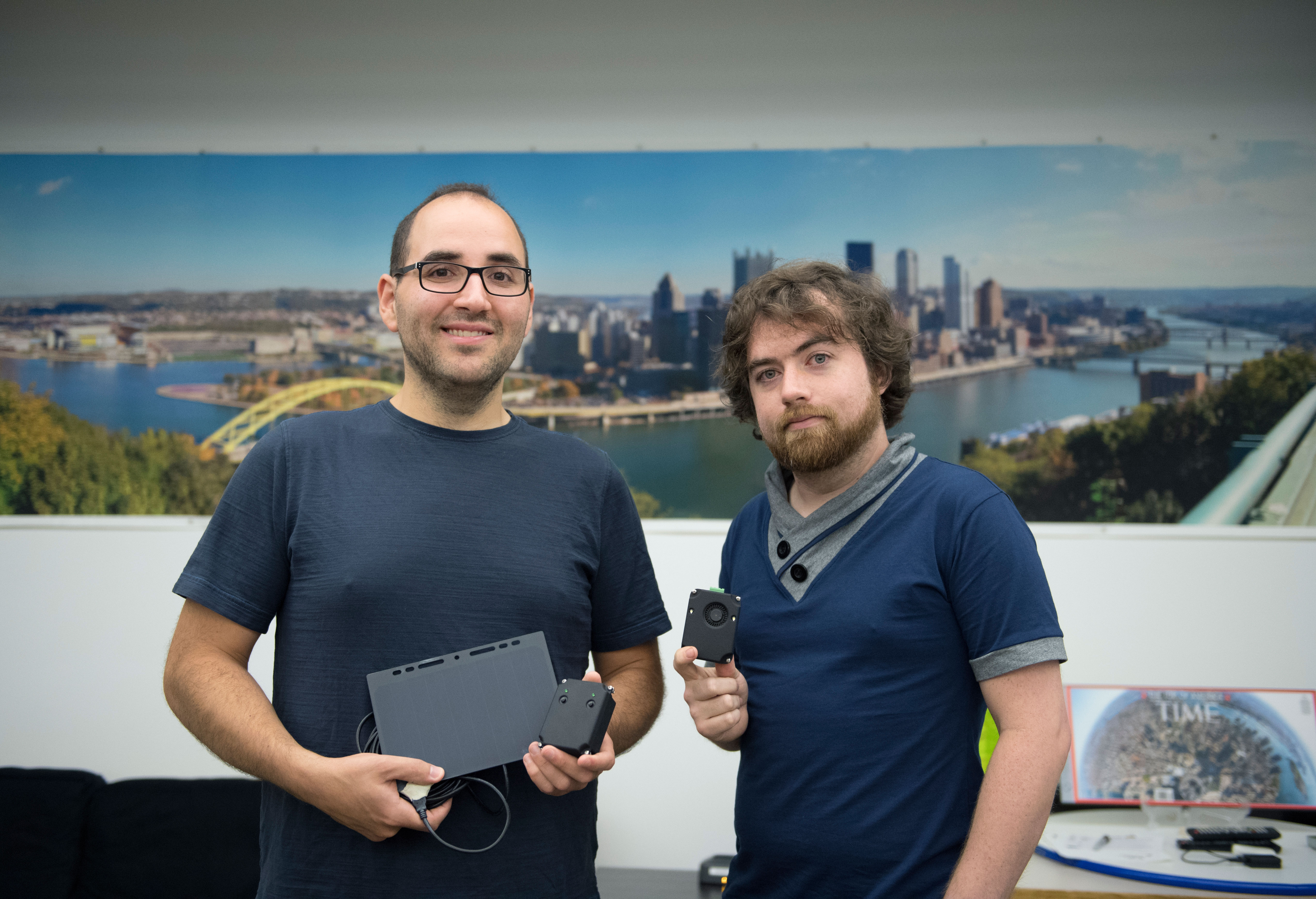Making Good on "Ideas for Good" Crowdfunding Campaign Aims To Rid African Homes of Cooking Smoke
Byron SpiceWednesday, July 5, 2017Print this page.

What began as a marketing campaign for a car company has turned into a passion project for a few Robotics Institute staff members: creating a solar-powered ventilation system to clear unhealthy cooking smoke from single-room African homes.
Joshua Schapiro and Mike Taylor, both research associates in the CREATE Lab, have designed the system and are seeking support for their Breeze Project through a crowdfunding campaign. They plan to build and install the ventilation systems in 25 homes in a village four hours outside of Kampala, Uganda.
Each system could fit easily in a shoebox: a solar cell about the size of a small tablet computer, a battery/remote control package, and a combined electric pump and LED lamp that fits in the palm of a hand, along with some flexible plastic tubing.
"It's modest," Schapiro said, "but even a little airflow can make a big difference for people who burn wood to cook meals indoors."
The original idea came from Tim Witmer, a contestant in Toyota's Ideas for Good campaign. Launched in 2010 and guided by Pittsburgh's Deeplocal marketing agency, Ideas for Good highlighted innovative technology in the company's Prius hybrid vehicle. It culminated with a contest in which people suggested how several of those technologies could be repurposed.
Smoke-based illnesses are a major problem in developing nations because biomass frequently must be used for cooking indoors on primitive stoves, and Witmer suggested the Prius' solar-powered ventilation system might be a solution. Out of the more than 4,000 entries, Toyota chose his as one of five winners and invited all five to the CMU campus in May 2011 to put together prototypes of their ideas.
Once the campaign ended, Toyota provided some funding to the university to continue development of the ideas. The CREATE Lab, which facilitated the build weekend for the finalists, adopted the ventilation project as its own. Illah Nourbakhsh, robotics professor and director of the lab, joined Taylor on a visit to Uganda in 2012 to get a better understanding of the need and the culture.
In Makukuulu parish, they found that home ventilation was indeed very poor, but that a few bricks always seemed to be missing near the ceiling, where forced airflow could be an option.
"We didn't realize until we were standing in the kitchens how dark they were," Taylor recalled, prompting them to add LED lighting to their plans for the ventilation systems.
In June 2013, Taylor and Schapiro returned to Makukuulu to install half a dozen hand-built systems.
"The smoke was so thick in there that you couldn't even breathe," Schapiro recalled of one of the homes. With the ventilation switched on, however, "within a few minutes we were hanging out and talking.
"It worked well. They loved it."
The systems were crude, designed to prove the principle but not built to last. Schapiro and Taylor figured they'd be back in short order with more and improved versions. Funding ran out for the project, however, and years of effort failed to identify a new sponsor.
"We created a presentation showing how a small amount of funding could transform air quality for an entire Ugandan village, and how the techniques we would develop could scale with local, African business leadership to cover entire countries," Nourbakhsh said. "Yet, foundations and corporations consistently turned down our request for underwriting. It was so very frustrating, for years."
A year ago, however, Schapiro and Taylor decided to revive the project on their own and generate financing to build and install the systems using generosity.com, a fundraising platform geared to charitable causes. Working out of Schapiro's garage, they designed a system that is smaller and easier to build, clean and maintain.
They figure they can build the systems in small quantities for $175 apiece, and for even less if these systems are produced in greater quantities in the future. They hope to raise $10,000 in their generosity.com campaign, which begins July 5 — enough to build, ship and install the systems in 25 homes.
Ultimately, they hope to install 100, enough for the entire village. Schapiro and Taylor plan to train and compensate members of the local village community so that the ventilation systems can be maintained after they are gone.
"The people of Makukuulu took us into their homes and made us part of their families," Schapiro explained. "I would like to do this for my family."
Byron Spice | 412-268-9068 | bspice@cs.cmu.edu
